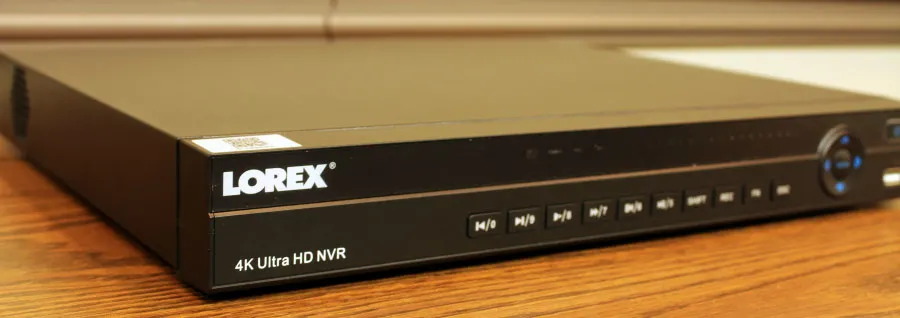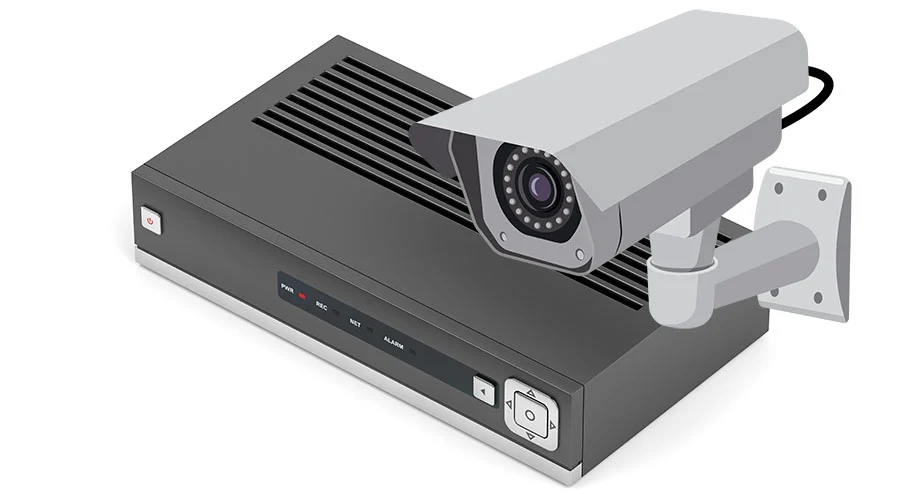Setting up analog equipment with an NVR may seem like a difficult task. With today’s reliance on wireless and ethernet-based systems, BNC connections have become less popular than their digital counterparts. While it is true that analog systems are falling out of favor, they still exist and some are much more reliable than other types of systems. This means you may run into an issue when connecting your analog camera to an NVR.
Adding an analog security camera to your NVR system can be done with the proper tools. Analog video data first needs to be converted before the NVR can read it; this is why an analog-to-IP converter is required.
With some simple setup, you can add analog cameras to your system with little hassle. Keep in mind that while the data from the camera is being transferred, where the camera gets its power will still need to be addressed. This means you still need to find a power source for proper camera operation.
What Does NVR Mean?

NVR stands for Network Video Recorder. This is the type of hub system designed to work with IP based cameras and your home network to handle video feeds through control software. Analog cameras are designed to connect to and use a different kind of hub, a DVR or Digital Video Recorder.
Most systems that you see today are NVR. While analog systems still exist and have their benefits, NVR has become more standard for home and commercial installations. People tend to choose NVR systems for a few reasons:
- They have audio and video recording capabilities, unlike DVR systems.
- Some NVR systems support PoE, or Power over Ethernet, capabilities. This means that power and data can be transferred via a single ethernet connection.
- NVR can support wireless functions. This adds to the flexibility of the cameras used in this type of system. It also allows for coverage in places where a wired connection is impossible.
- NVR supports higher image resolution than DVR based systems that rely on the coaxial cable to transfer data.
Even with all that in mind, some people still prefer to use a DVR system, because some argue that the connections on a DVR are more secure and less prone to interference (or hacking). For most of these systems, the RG59 cable is standard, which unlike most Cat5 or Cat6 ethernet cables, are shielded wires. DVR systems also tend to cost less than NVR systems.
This may have to do with DVR becoming less popular over the years and the NVR system’s ability to function on a network with multiple devices. Both NVR and DVR systems will offer onboard storage options. They will also come equipped with connections that will allow you to watch your video feeds on a TV or computer monitor.
If you are upgrading from an analog system, you may have already invested in equipment you don’t want to replace. Thankfully, there is a way to still get use out of your old cameras. Although NVR systems don’t support the types of connections your analog cameras have, there have been devices designed to fix this problem.
Adding an Analog Security Camera to an NVR

If you’re still interested in using your analog cameras – whether varifocal or not (our guide) – in your NVR based security system, you still have a few options. One thing to consider is how an analog camera works with a DVR. When the camera captures video, it sends it over to the DVR as an analog signal. This analog signal is then converted into a digital format by the use of a video capture card. Without this, the signal couldn’t be viewed on a screen.
When an IP camera captures an image, it converts it before sending out the data. This means that the camera itself is doing the work of a video capture card. After this point, the video stream is digital and can be streamed over your network with either wired or wireless connections. To solve the problem of connecting analog cameras to your NVR, you need to first convert your signal to digital.
What are Video Encoders?
To solve the issues with connecting analog cameras to digital NVR systems, devices called video encoders, which can be found on Amazon, perform the task of converting the signal. These products are plug and play out of the box. Video encoders can support high video resolutions and multiple video formats. They allow you to connect your BNC RG59 cable into the device and then output through an RJ45 ethernet cable.
When working with this type of equipment it’s good to have an understanding of ONVIF compatibility. ONVIF stands for Open Network Video Interface Forum. This is an organization set up by security camera manufacturers to standardize the IP-based security camera industry which allows consumers to use similar technology like BNC cables repeatedly (our guide). The forum’s primary goal is to offer manufacturers standards to build their products with open compatibility with other manufacturers.
When connecting analog cameras to IP, you need to make sure the cameras are the same brand/ONVIF compliant. If not, you could lose access to certain features and functionality.
Hybrid DVR/NVR Recorders
If you are considering connecting more than a few analog cameras to your system, you may want to think about purchasing an NVR DVR Hybrid System (on Amazon). These hybrid systems support both analog video through BNC connectors and record audio and video from IP based cameras using ethernet.
They offers an excellent solution for those who want all the benefits of an NVR, like remote viewing, but still have built-in connections for analog cameras. Hybrid recorders can offer a few unique benefits too, including:
- Limiting the strain on your network. Using analog security cameras means you are not transferring data over your network. Your router can only support so much under its bandwidth. These restraints can push some to use off-site recording devices, which can be a security issue.
- Opening up use to more cameras. Using hybrid systems means you have access to more camera options. Analog cameras are still very popular and can offer years of use and service.
If you are using a hybrid system, you may need to purchase an ethernet switch like the 8 Port PoE switch from Amazon. Switches allow you to connect multiple cameras to your system and your router. They are invaluable when setting up a system with more than three IP based cameras.
They can also extend the maximum length by which your cameras can be set up. The switch will connect from your DVR/NVR to your router with ethernet cables, moreover, these systems can also support PoE capabilities. With hybrid systems, it is good to understand that there is no standard for these devices.
Some complaints about these products are that they offer only limited support for IP cameras. Some devices claim to be hybrid but only allow for the function of 2 or fewer IP cameras on your system. The good news is that there are products out there that are truly hybrid. Always do your due diligence and learn about a device before purchasing. Look at reviews and others’ experience with the product before you buy one.
